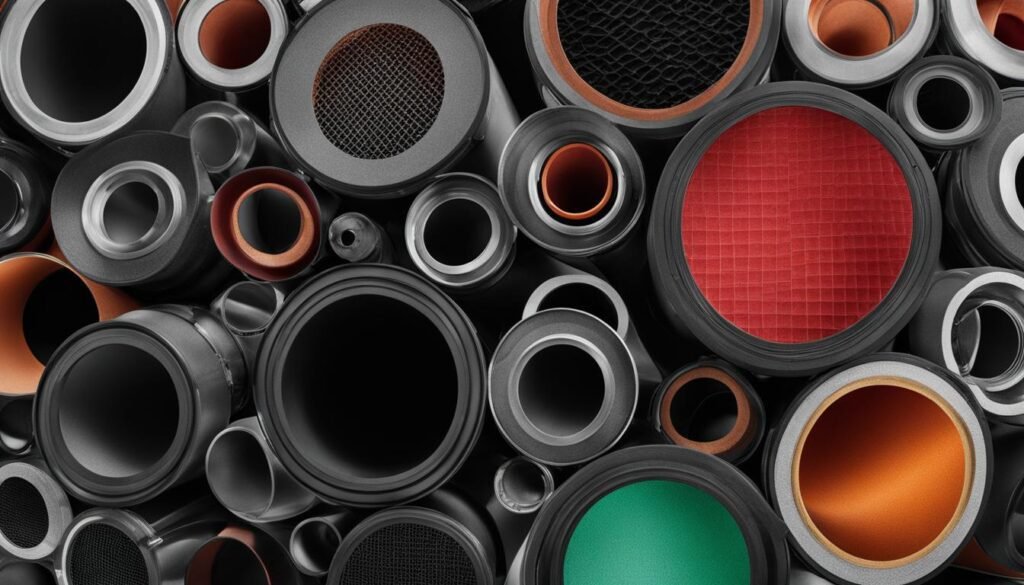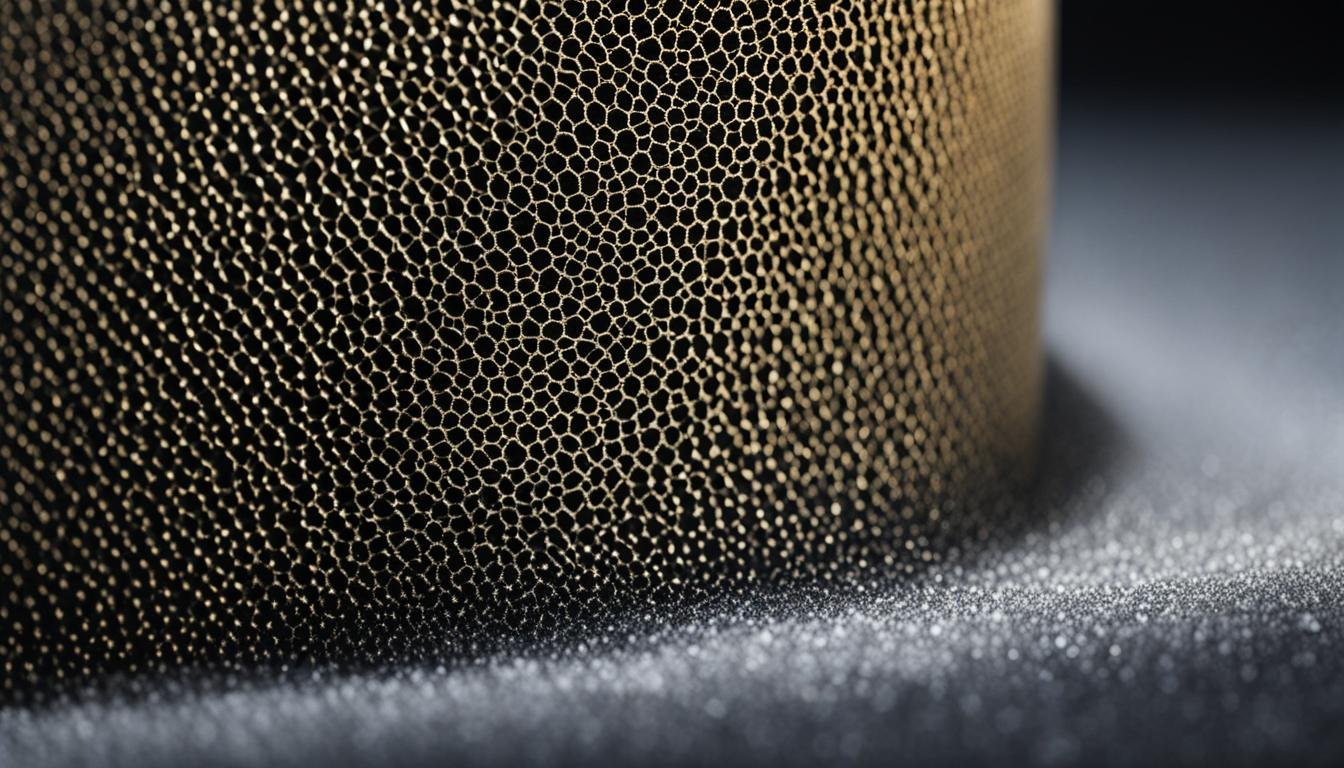Vacuum cleaner filters are an essential component in maintaining the performance and air quality of your vacuum cleaner. These filters are made from various materials, each serving a specific purpose in capturing dirt and allergens. Understanding the different types of vacuum cleaner filters and their materials can help you choose the right one for your cleaning needs.
There are several common materials used in vacuum cleaner filters. Bag filters, which are commonly found in traditional vacuum cleaners, are typically made from paper, cloth, or synthetic materials. These filters have small holes that allow air to escape while trapping dirt and dust. Foam filters, on the other hand, collect smaller particles of dust and can be washed for reuse.
Cyclone filters are often used in bagless vacuum cleaners and are made from durable materials. They work by spinning the air to force dirt particles to collect in the dust bin. Cartridge filters have a circular design and can be made of foam, folded paper, or synthetic materials. They are often found in newer vacuum models and offer efficient filtration.
Cloth filters are commonly found in larger vacuum cleaners and are designed to clear larger particles and heavier debris. These filters are washable and more durable, making them suitable for heavy-duty cleaning tasks.
When choosing a vacuum cleaner filter, consider the type of vacuum cleaner you have and the specific cleaning needs. Each material offers different levels of filtration and durability, so it’s important to select the best filter material for your situation.
Key Takeaways:
- Vacuum cleaner filters are made from various materials, including paper, cloth, synthetic materials, foam, and durable fabrics.
- Bag filters, foam filters, cyclone filters, cartridge filters, and cloth filters are common types of vacuum cleaner filters.
- Bag filters are often made from paper, cloth, or synthetic materials and have small holes that trap dirt while allowing air to escape.
- Foam filters collect smaller particles of dust and can be washed for reuse.
- Cyclone filters use spinning air to force dirt particles to collect in the dust bin of bagless vacuum cleaners.
Types of Vacuum Cleaner Filters and How to Care For Them
When it comes to vacuum cleaner filters, different types require different maintenance and care. To ensure optimal performance and longevity, it’s important to understand how to properly care for each filter type. Let’s explore the various vacuum cleaner filters and the best practices for maintaining them:
Bag Filters
Bag filters are commonly found in vacuum cleaners and are designed to trap dust and debris. Regularly checking bag filters is crucial, as they should be changed when full to prevent reduced suction power. It’s recommended to replace bag filters with new ones to ensure optimal filtration.
Foam Filters
Foam filters are washable and can be reused, making them cost-effective and environmentally friendly. However, it’s essential to refer to the manufacturer’s instructions for specific care instructions. Cleaning foam filters regularly prevents clogging and maintains optimal performance.
Cyclone Filters
Cyclone filters are commonly used in bagless vacuum cleaners and work by spinning the air to separate dirt particles. These filters should be cleaned every three months by rinsing them in cold water. After cleaning, allow them to air dry completely before reinserting them into the vacuum cleaner.
Cartridge Filters
Cartridge filters can be either replaceable or washable, depending on the vacuum cleaner model. Replaceable cartridge filters should be swapped out according to the manufacturer’s recommendations. Washable cartridge filters can be cleaned by rinsing them under running water or following the manufacturer’s instructions.
Cloth Filters
Cloth filters are durable and washable. While they are often used in larger vacuum cleaners, they should be used in conjunction with a secondary filter for optimal filtration. When cleaning cloth filters, it’s important to follow the manufacturer’s instructions to prevent damage and maintain their effectiveness.
Regularly cleaning and replacing vacuum cleaner filters is essential for maintaining optimal suction power and preventing blockages. By following the proper care instructions for each filter type, you can ensure that your vacuum cleaner performs at its best, leaving your home clean and fresh.

| Filter Type | Maintenance |
|---|---|
| Bag Filters | Check regularly and replace when full |
| Foam Filters | Wash instead of replacing, following manufacturer’s instructions |
| Cyclone Filters | Clean every three months with cold water, air dry completely |
| Cartridge Filters | Replaceable: follow manufacturer’s recommendations Washable: rinse under running water or follow manufacturer’s instructions |
| Cloth Filters | Use in conjunction with a secondary filter, follow manufacturer’s washing instructions |
Conclusion
Vacuum cleaner filters are crucial for maintaining optimal performance and indoor air quality. By effectively trapping dirt and dust particles, these filters prevent them from being released back into the air or causing blockages. Regularly cleaning or replacing your vacuum cleaner filters, as recommended by the manufacturer, is essential to prevent reduced suction power and potential damage to internal parts.
There are different types of filters available, such as bag filters, foam filters, cyclone filters, cartridge filters, and cloth filters. Each type offers different levels of filtration and requires specific cleaning methods. Understanding the type of filter used in your vacuum cleaner and following the manufacturer’s care instructions will ensure that your vacuum cleaner performs at its best and helps maintain a dust-free home.
When it comes to maintaining vacuum cleaner filters, consistency is key. Regularly check your filters for dirt and debris, and clean or replace them as needed. Additionally, it’s important to remember that a clogged or dirty filter not only affects the vacuum cleaner’s performance but can also lead to poor air quality. By prioritizing the care of your vacuum cleaner filters, you can ensure optimal performance and maintain a clean and healthy living environment.
FAQ
What are the different types of vacuum cleaner filters?
The different types of vacuum cleaner filters include bag filters, foam filters, cyclone filters, cartridge filters, and cloth filters.
What are bag filters made from?
Bag filters are usually made from paper, cloth, or synthetic materials and have small holes that allow air to escape while trapping dirt and dust.
Can foam filters be washed?
Yes, foam filters can be washed instead of replaced. However, it’s essential to check with the manufacturer for specific instructions.
How do cyclone filters work?
Cyclone filters are often used in bagless vacuum cleaners and work by spinning the air to force dirt particles to collect in the dust bin.
What are cartridge filters made of?
Cartridge filters have a circular design and are made of foam, folded paper, or synthetic materials.
What are cloth filters used for?
Cloth filters are commonly found in larger vacuum cleaners and are designed to clear larger particles and heavier debris.
How often should bag filters be checked or replaced?
Bag filters should be checked regularly and changed when full.
How should cyclone filters be cleaned?
Cyclone filters should be cleaned every three months in cold water and left to air dry.
Can cartridge filters be washed?
Cartridge filters can be either replaceable or washable, depending on the vacuum model.
Are cloth filters washable?
Yes, cloth filters are washable and more durable. However, they should be used in conjunction with a secondary filter.
What happens if I don’t clean or replace my vacuum cleaner filters?
Not cleaning or replacing vacuum cleaner filters can lead to reduced suction power, blockages, and potential damage to internal parts.
Why is it important to follow the manufacturer’s instructions for cleaning filters?
Following the manufacturer’s instructions for washing and drying filters is crucial to avoid damaging the filters.
How does proper care and maintenance of vacuum cleaner filters benefit air quality?
Proper care and maintenance of vacuum cleaner filters ensure that the filters effectively trap dirt and dust particles, preventing them from being expelled back into the air or causing blockages.
Why is regular cleaning or replacing of vacuum cleaner filters necessary?
Regularly cleaning or replacing filters, as recommended by the manufacturer, prevents reduced suction power and potential damage to internal parts.
What is the role of vacuum cleaner filters in maintaining optimal vacuum cleaner performance?
Vacuum cleaner filters play a vital role in maintaining optimal vacuum cleaner performance by trapping dirt and dust particles, preventing them from clogging the machine and reducing suction power.
How can I ensure my vacuum cleaner helps keep my home dust-free?
Understanding the type of filter used in your vacuum cleaner and following the appropriate care instructions will ensure that your vacuum cleaner performs at its best and helps keep your home dust-free.





Leave a Reply